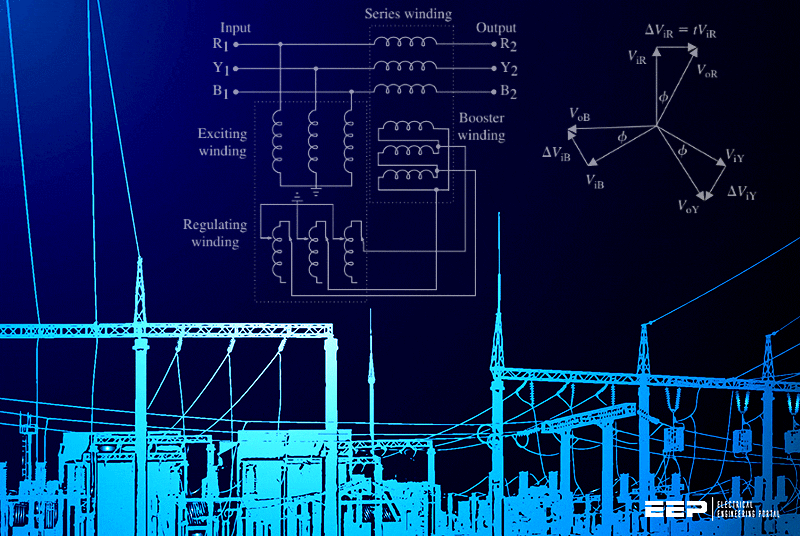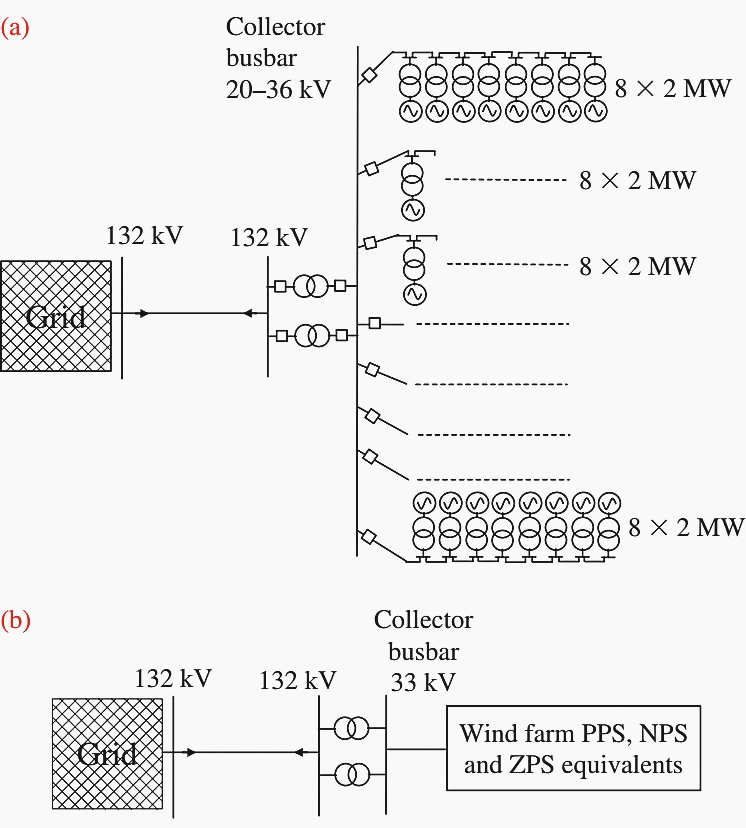Analysis of AC power systems
The analysis of three-phase AC power systems is greatly simplified if the system is assumed perfectly balanced. The three-phase system can then be modeled and analyzed on a per-phase basis because knowledge of voltages and currents in one phase allows us to calculate those in the other two phases where they differ by ±120° phase displacement from those of the known phase.

However, in practical three-phase power systems, there are a number of sources of unbalance which can be divided into internal and external sources. Internal sources of unbalance are those due to the inherent small differences in the phase impedances and susceptances of the three-phase power plant such as overhead lines and transformers.
Three-phase generators, however, produce, by design, a balanced set of three-phase voltages. External sources of unbalance are those that impose an unbalanced condition on the power system network such as the connection of unbalanced three-phase loads or single-phase loads, to a three-phase power system, the occurrence of unbalanced short-circuit and open-circuit faults.
The modeling and analysis of external balanced and unbalanced faults are the core topic of this guide.
The analysis of unbalanced short-circuit and open-circuit faults in practical power systems makes extensive use of the theory of symmetrical components. Fortescue proposed this general theory in a famous paper in 1918. It applies to a system of N unbalanced phasors, including the case of three unbalanced phasors representing three-phase power systems.

The theory enables the transformation of three unbalanced phasors into a three-set of balanced phasors called:
- Positive phase sequence (PPS),
- Negative phase sequence (NPS), and
- Zero-phase sequence (ZPS) phasors.
This property presents an extremely powerful analysis tool that enables the formation of three separate and uncoupled equivalent networks called the PPS, NPS, and ZPS networks provided that the three-phase power system network in physical phase terms is internally balanced.
The types of external unbalanced conditions imposed on the actual three-phase network determine the methods of connection of these sequence networks.
Short-circuit analysis & calculations
Short-circuit analysis is carried out in electrical power utility systems, industrial power systems, commercial power systems, and power station auxiliary systems. Other special applications are in concentrated power system installations onboard military and commercial ships and aircraft. Short-circuit calculations are generally performed for a number of reasons.
These are briefly described in this guide.
Characterization of faults
Because they are unbalanced, one-phase open-circuit and two-phase open-circuit faults are characterized by the negative and zero phase sequence voltages and currents they generate at the fault location and elsewhere in the power system particularly at substations where electrical machines are connected.
Machines are vulnerable to damage by overheating due to excessive negative phase sequence currents flowing into them.
Short-circuit faults are characterized by the short-circuit current and its components. These are the AC or symmetrical root mean square (rms) short-circuit current, DC short-circuit current or DC time constant or X/R ratio, and the overall asymmetrical short-circuit current.
| Title: | Modeling and analysis of external balanced and unbalanced faults (symmetrical components) – Nasser D. Tleis BSc, MSc, PhD, CEng, FIEE |
| Format: | |
| Size: | 536 KB |
| Pages: | 46 |
| Download: | Here 🔗 (Get Premium Membership) | Video Courses | Download Updates |


